Types of Braces
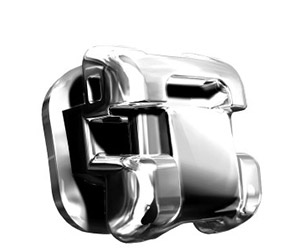
THE DAMON SYSTEM
The Damon System bracket is self-ligating, so it eliminates the need for elastic ties to keep the wire in. Without a tie, the braces stay clean and friction is reduced allowing your treatment to progress more efficiently, with less discomfort along the way. Damon System braces are available with both a metal and an aesthetic option.
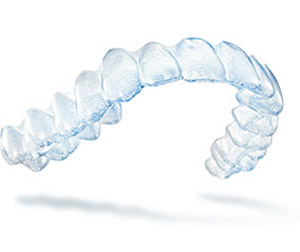
Clear Aligners
Clear Aligners are the ultimate option in terms of aesthetic treatment options. We use custom molded clear trays with attachments to move your teeth to the ideal position. Because they are removable, patient compliance is extremely important. Clear Aligners are a terrific option for working professionals or patients seeking a discrete solution to improve their smile, however, it is not ideal for every case. Dr. Buckman will determine if Clear Aligners are the right treatment option for you.

CLEAR BRACES
The Damon Clear bracket is the most aesthetically clear brace in the market. It blends beautifully with your teeth and features a clear slide mechanism that conceals the wire. Because the slide is used in place of elastic ties, the braces stay clean and clear throughout treatment and reduce the overall appointments needed to complete treatment.
Types of Appliances
FORSUS (BITE FIXER)
This appliance is used in overbite cases after leveling and aligning your bite. We use a spring that is connected to the brackets to bring your jaw forward.
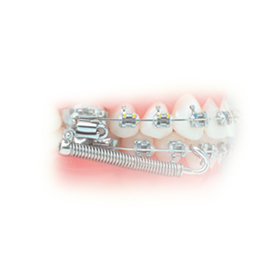
HERBST APPLIANCE
We use a Herbst in more severe overbite cases as an alternative to jaw surgery. This appliance can even be used on adults and is believed to stimulate lower jaw growth, which delivers stability after your braces come off.
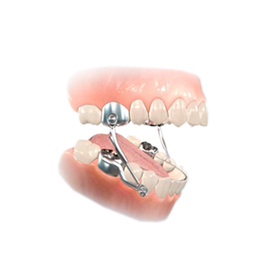
ELASTICS (RUBBER BANDS)
We connect small elastomeric rubber bands from one tooth to another to improve positioning.
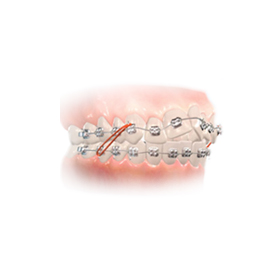
Click Here for the Elastic Wear Video (featuring Dr. Buckman)
APPLIANCE
Any device that is used in your mouth, to change the shape of your jaw or move your teeth, is referred to as an appliance.

FACEMASK
An appliance used in underbite cases to advance your upper arch forward. It is used with adolescents before the age of 9 as an attempt to avoid later jaw surgery.

LA APPLIANCE
This lingual retainer is used on the lower arch to hold space after your phase I treatment. Similar to the TPA Appliance, we use it in instances of early loss of a primary tooth.

FIXED RETAINER
This is typically used after your treatment is complete. We bond wires to the inside of your upper and lower arches to hold your teeth in place. These are most often used in severe cases, along with clear retainers.
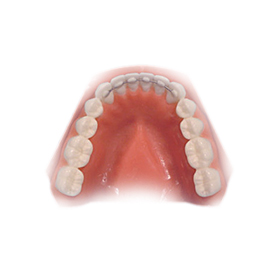

Eating with Braces
While it’ll be hard at first, the foods you can eat with braces are going to be limited. Foods that are soft or can be easily mashed up are ideal as they won’t make your teeth hurt or damage your new braces. This can be foods such as pancakes, oatmeal, applesauce, soup, mashed potatoes, mac & cheese, soft-serve ice-cream, or anything similar. Foods that are hard, crunchy, sticky, or tough should be avoided.

Foods to Avoid
Sticky- gum, peanut butter, tootsie rolls, caramel, toffee
Hard- raw vegetables (such as carrots or celery), apples
Crunchy- chips, popcorn, hard cookies
Tough- corn on the cob, sandwiches, bagels, steal, ribs
While these foods should be avoided, there are ways to enjoy your favorite foods without causing pain or damage to your braces. For example, vegetables can be cooked so they’re softer, cut corn off the cob, slice apples into small bites, cut sandwiches into sections, and eat soft-baked cookies.
If you’re questioning if a certain food is okay to eat, please contact our office and we’ll gladly help you!
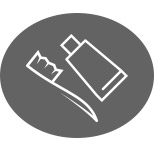
Care of Appliances: Brushing
While it’s always important to brush and floss your teeth regularly everyday to keep them clean, with braces, it’s even more crucial. To make sure your teeth are healthy throughout your treatment, you’ll need to brush and floss your teeth consistently.

General Soreness
When you first get your braces, it is normal to feel some sensitivity and soreness. To help relieve some of this pain, you can rinse your mouth with a salt-water mix or take over-the-counter medicines. If you feel your braces are poking your mouth or rubbing against your gums, apply some dental wax to cover these areas to prevent cuts or blisters.
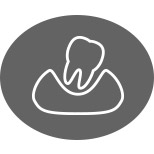
Loosening of Teeth
If you’re experiencing some looseness of your teeth, this is normal! In order for your teeth to be properly aligned, your teeth will need to be loosened so they can be moved. This is natural and part of the process to a beautifully aligned smile. Once your teeth are in their desired position, they’ll settle in place.

Loose Wire, Bracket or Band
Unfortunately, with braces, a bracket will likely pop loose or a wire may come out of place. Don’t worry though! This is normal and inevitable.
Sometimes, depending on the wire, you may be able to push it back into place with tweezers or the back of a pen. Dental wax can also be used to cover the area. Be sure to schedule an appointment as soon as possible to have the bracket, wire, or band repaired.
Brushing & Flossing
Brushing
To brush your teeth with braces, use a soft bristle toothbrush and brush the outside of your teeth and braces. With light pressure, hold the brush at a 45 degree angle and brush along the top and bottom of the braces. Make sure you brush every area (including your back teeth and behind your molars) very carefully. Do this for about three minutes twice a day.
Flossing
At least once a day, floss your teeth to maintain good hygiene and keep your teeth healthy. At first, flossing with braces may be a bit difficult, but rest assured you’ll get the hang of it! To floss, thread the floss under the archwire but threading the floss through manually or using a floss threader.
When threading the floss on your upper teeth, it’s best to start by pushing the floss from the top of your teeth to the bottom. For your bottom teeth, thread the floss from the bottom to the top. Just remember to always thread away from your gums! Once threaded, floss around each tooth and gum just as you did prior to braces.
Retainer Care Instructions
- Always store your retainer in the case. Never put it in your pocket (accidently shattered), or wrap in a cloth or napkin (accidently thrown away).
- Always remove retainers when eating or drinking anything besides water. When you remove them rinse well, pat dry, and place them in the case we give you.
- Follow the doctor’s instructions for wear.
- Always remove retainers when brushing your teeth. Be sure to pay attention to the points where your retainer touches your teeth.
- Clean retainers thoroughly with a toothbrush and water. DO NOT USE TOOTHPASTE as the toothpaste is abrasive and will make your retainers cloudy. Concentrate specifically on the side of the retainer that is in contact with your gums. Failure to clean retainers well can result in damage to your gums and teeth. Patients may also dip their retainers in clear mouthwash (not colored as they may stain), rinse off, and then pat dry in order to refresh. Using retainer cleaners such as Retainer Brite is also another great option.
- Don’t flip the retainer with your tongue because this could result in damage to your teeth or the device.
- Put the retainer in with your fingers. Please do not bite the retainer into place since this could result in injury or damage to your teeth.
- If there is any part of the retainer that is pinching your gums, set up an appointment with Dr. Buckman so that we can fix this for you.
- Use your best judgment regarding removing them for sports, swimming, singing, meetings, etc. If there is a significant risk that they will be lost or damaged if you continue to wear them while doing an activity, remove them and place in the provided case. Remember to replace them when you are done with the activity. Always wear a mouth guard when playing sports to ensure the safety of your teeth and mouth.
- If there are wires on the outsides of your teeth, they should not be used to remove the retainers. This will bend and eventually break them. Use clasps on the back teeth to remove the retainers.
- Since your retainer is made out of acrylic, which is sensitive to heat, do not subject the retainers to heat. This will result in them becoming distorted. Common examples are oiling them, putting them in the dishwasher, leaving them in a hot car, etc.
- Bring your retainers to each appointment for inspection.
- Occasionally, a piece of acrylic will chip or break. As long as the retainer is still wearable, you can continue to wear it until Dr. Buckman can check it for you. If there is a sharp edge, you can use a nail file to smooth it off until a necessary repair can be performed.
Emergency Care
For emergency situations, always contact your doctor or emergency medical services for immediate attention.
For orthodontic emergencies, our office is always here to help! Usually, most emergency situations can be fixed temporarily at home. Loose wire or brackets that are causing discomfort can be pushed back into place (using tweezers or the back of a pen) or covered in wax. Once fixed, you still need to call our office for an appointment to have these repaired.
If the issue at hand is more severe, such as an appliance breaks or a wire becomes loose and is preventing your mouth from opening or closing, call our office immediately. We’ll schedule you an appointment to have this issue fixed.
It should be noted that it’s normal to have some discomfort for a few weeks after getting braces and for a few days after adjustments are made. To alleviate pain, rinse your mouth with a salt-water solution or take over-the-counter pain medicine.




